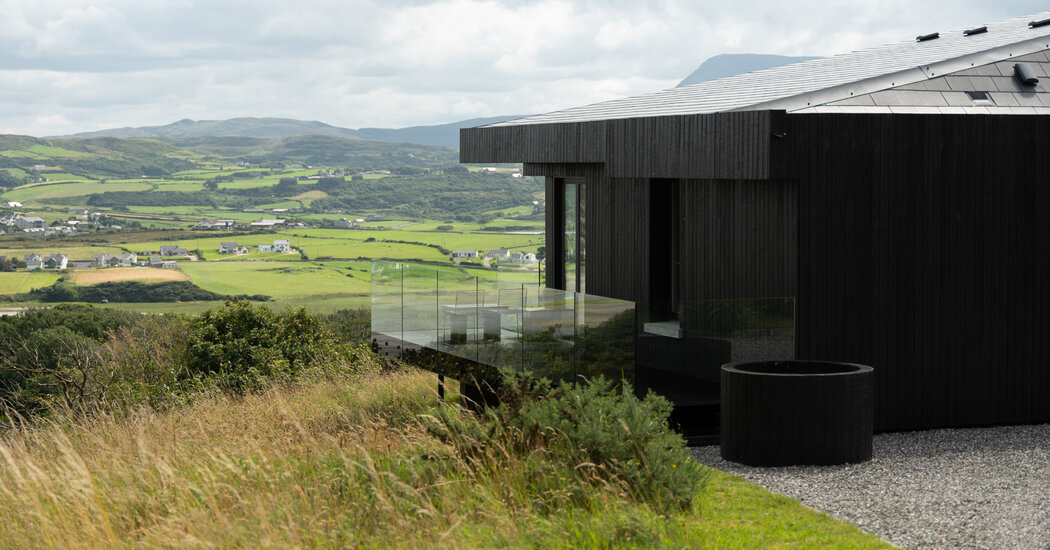Orsted, Offshore Wind Firm, Cancels N.J. Projects
Orsted, the Danish company that is a leading offshore wind farm developer, said on Wednesday that it would write off as much as $5.6 billion as it gives up on plans to build two wind farms off the coast of New Jersey.
The charges were further evidence that offshore wind in the United States is going through a major shakeout, crimping Biden administration plans to make the industry a critical component of plans to reduce greenhouse gas emissions. High inflation and soaring interest rates are making planned projects that looked like winners several years ago no longer profitable.
“The world has in many ways, from a macroeconomic and industry point of view, turned upside down,” Mads Nipper, Orsted’s chief executive, said on a call with reporters on Wednesday. The two projects, known as Ocean Wind 1 and 2, were destined to provide green energy to New Jersey.
Offshore wind and other parts of the renewable industry have hit some snags in Europe, especially in Britain, but Mr. Nipper said the problems were more acute in the United States, because early contracts lacked protection from inflation and developers incurred high costs because of delays in approvals during the Trump administration.
The company’s stock price fell about 20 percent on Wednesday morning as the company reported a loss of about $3.2 billion for the third quarter and warned that the write downs — essentially, a reduction in the value of the company’s investments — would have what it called an “impact” on Orsted’s finances.
Orsted is writing off 28.4 billion krone, or about $4 billion, now. The company estimates that it may take another charge of up to 11 billion krone later in the year.
Orsted is not alone in encountering hazards in the fledgling offshore market in the United States.
On Tuesday, BP, the London-based energy giant, said it would write down $540 million on three planned wind projects off New York, after the state authorities declined to renegotiate their terms. BP says it is assessing future plans for the schemes in light of the decision.
In its announcement, Orsted said it would move forward with a $4 billion project called Revolution Wind intended to supply power to consumers in Rhode Island. And other developers have projects under construction, like Vineyard Wind, which will eventually have 62 turbines in the waters off Martha’s Vineyard, Mass.
Offshore wind is not dead, but the industry and its backers are certainly learning some harsh lessons. The ambitions of the Biden administration and states along the East Coast like New York, New Jersey and Massachusetts to install large amounts of clean electric power generation through offshore wind in the coming decades are likely to be set back.
The industry is dealing with equipment shortages as result of pandemic-era supply chain issues, along with a growing number of orders for wind turbines as governments try to meet green energy goals. And escalating interest rates, as central banks around the world try to curb inflation, have caused financing costs to soar.
Consumers will also probably pay more in their electric bills for power generated from offshore wind, as developers demand higher prices and protection from inflation.
Mr. Nipper said that rekindling interest in developing offshore wind off the East Coast depended on “a reset of what offshore power needs to cost.”
New York State declined in October to renegotiate existing offshore wind power contracts, but a subsequent auction awarded deals to supply power at significantly higher prices and with various provisions to protect the developers from inflation.
Still, there is little question that the confluence of challenges that Mr. Nipper characterized as a “perfect storm” is weighing down an industry that governments are counting on to produce large volumes of clean and relatively cheap electricity to tackle climate change.
Orsted has been both a pioneer and leading developer of offshore wind. After building the first offshore wind farm off Denmark in the early 1990s, the company has built up a global portfolio with projects in Britain, Poland and Taiwan as well as the United States.
Mr. Nipper said the company would be looking at various cost-saving measures including reshaping its portfolio. The company is likely to be more cautious in its investment plans, at least in the near term.
Orsted’s problems are not occurring in a vacuum. Siemens Energy, a large German maker of electric power equipment, recently said it was seeking government help to finance guarantees for orders and forecast large losses because of problems in its wind turbine unit, Siemens Gamesa.
In the case of Orsted, the write downs come largely as a result of the company’s decision to cancel a large project off New Jersey called Ocean Wind 1 that was well underway. Orsted also decided to scrub a sister project called Ocean Wind 2.
The write-offs will include investments the company has already made in building the project, payments to suppliers for goods already ordered or delivered and penalties for walking away from contracts.


